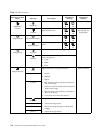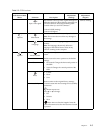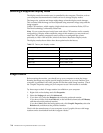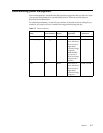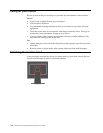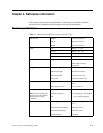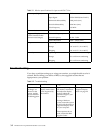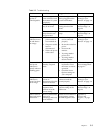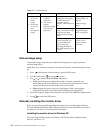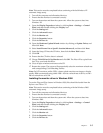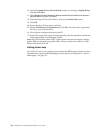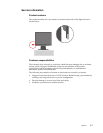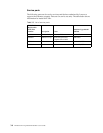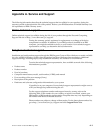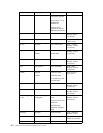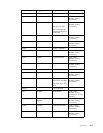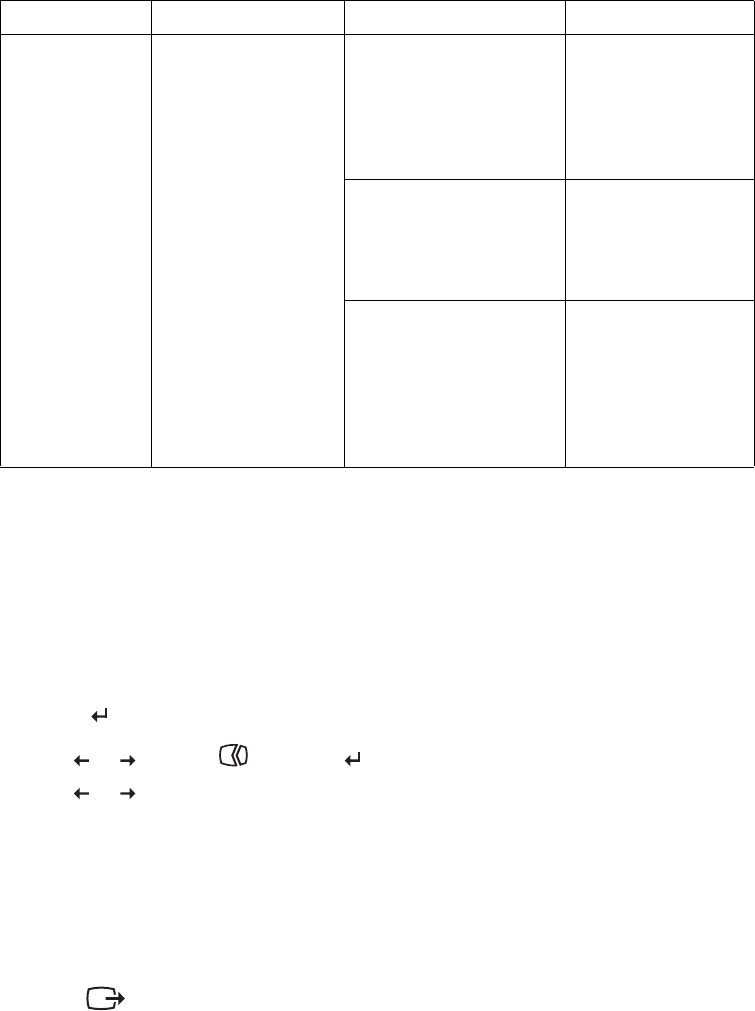
3-4 ThinkVision L171p Flat Panel Monitor User’s Guide
Manual image setup
If automatic image setup does not establish the image that you prefer, perform
manual image setup.
Note: Have your monitor powered on for about 15 minutes, until the monitor warms
up.
1. Press
at the bottom of the monitor to open the OSD menu.
2. Use
or to select and press to access.
3. Use
or to select Clock and Phase adjustment.
• Clock (pixel frequency) adjusts the number of pixels scanned by one
horizontal sweep. If the frequency is not correct, the screen shows vertical
stripes and the picture does not have the correct width.
• Phase adjusts the phase of the pixel clock signal. With a wrong phase
adjustment, the picture has horizontal disturbances in light picture.
4. When the image no longer looks distorted, save the Clock and Phase adjustments.
5. Press
to leave the OSD menu.
Manually installing the monitor driver
Below are steps for manually installing the monitor driver in Microsoft
®
Windows
XP
®
and Microsoft Windows 2000 Professional. Please see the Install Driver section of
the Reference and Driver CD for automatic installation.
Installing the monitor driver in Windows XP
To use the Plug and Play feature in Windows XP, files should be loaded from the
Reference and Driver CD.
• Fuzzy lines
in text or a
blurry
image.
• Horizontal
or vertical
lines
through the
image.
• Image setup has
not been
optimized
•Your system
Display
Properties setting
have not been
optimized.
Adjust the resolution
settings on your system
to match the native
resolution for this
monitor: 1280 x 1024 at 60
Hz.
“Adjusting your
monitor image” on
page 2-3
“Manual image
setup”
Perform automatic image
setup. If automatic image
setup does not help,
perform manual image
setup.
“Selecting a
supported display
mode” on page 2-6
When working in the
native resolution, you
may find additional
improvements by
adjusting the Dots Per
Inch (DPI) setting on your
system.
See the Advanced
section of your
system’s display
properties.
Table 3-2. Troubleshooting
Problem Possible cause Suggested action Reference



